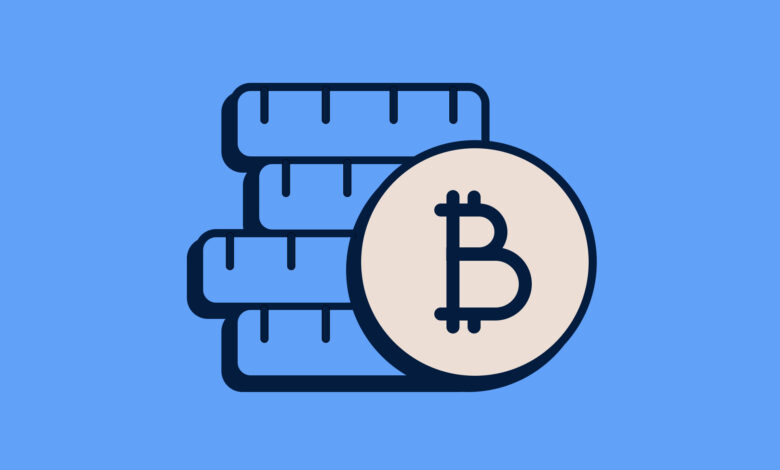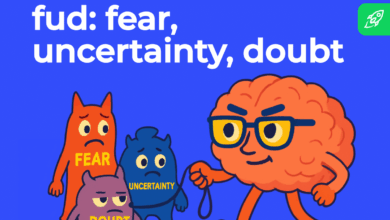How do popular theories in economics shape crypto?

- Stackelberg game is a type of game examined within the game theory in which players are divided into leaders and followers. Followers choose their strategies after observing leaders. A crypto example would be a blockchain-based edge computing network that involves two players – the service provider and the miner.
- According to Minsky, banks are not just intermediaries but profit-making institutions with an incentive to increase lending, and this mechanism amounts to economic instability.
- Network effects are responsible for 70% of the value created by all tech companies since 1994, according to a 2017 report.
When you want to measure something, you know which parameters to use. Widely accepted terms for measuring height, weight, distance, and so on present a language that is common to all of us. Accordingly, when we want to measure value, we use money.
Now that money is our universal language, we may take it for granted. It is our common medium of exchange – our very own value metre. How it came to this many people don’t know because most of us take it for granted, and that’s totally fine.
However, if you want to take a dive into the depths of understanding money, then you will probably start with monetary economics. A whole branch of economics studies different theories of money, providing a harmonised framework for analysing its main functions and how it can obtain acceptance simply because of its convenience of use.
As we said, fiat money has three main functions – it is a medium of exchange, a store of value and a unit of account. When we look from that point of view, it doesn’t differ. By paying for something by conducting Bitcoin transactions or transfers between traditional bank accounts, you provide a unit of account to obtain something that has a certain value.
However, the answer to the question of what the difference is lies in the decentralisation aspect. While money is regulated and controlled by traditional financial institutions, crypto is a decentralised environment without a central point of authority.
One of the most common mistakes in the industry is made by those people who look at blockchain technology only through the lens of computer science or applied cryptography. Economics requires us to think of the main problems associated with new technology from another point of view.
When is crypto going to be widely adopted as a universal language for measuring value, it is yet to be seen. The thing is we are at the breakthrough of monetary economics 2.0, and big changes cannot happen in a heartbeat.
When you disregard all the talk about blockchain technology and all its technical aspects and innovations, you are left with a digital financial system. Passing through bad features of the crypto market, frequently associated with high volatility and referred to as a speculative bubble, you will understand that the decentralised monetary structure borrowed many terms associated with the centralised financial system.
That is not unusual – it is still economics with the same essential role, businesses, ordinary users, and underlying principles. As we said, the real difference lies in the lack of intermediaries such as a central bank, data protection, increased security, and the underlying technology that provides all that.
In this article, we are going to explain three popular economic theories – the Game Theory, the Minsky Moment, and the Network Effect theory – to demonstrate how it all comes down to the same conclusion.
Let’s start off easy by defining the term Game. A game is a competitive activity that includes skill, chance, or endurance on the part of two or more players participating in a set of rules for the purposes of their own amusement or for the amusement of spectators.
For example, when playing the tic-tac-toe game, you probably came up with a strategy in your mind that helps you to achieve the last draw and claim victory. Sticking to a strategy helps you to win, especially if your opponent makes a mistake or doesn’t notice your intentions.
Another good example is playing chess. Whether you will win or not depends on the moves you make, and the moves your opponent makes. The more skillful player is going to win.
Now we are asking you – what do sales price wars, missile defence, energy regulation, negotiations, military conflicts, advertising, stock market, investing, insurance, and many other real-world activities have in common? A strategy.
Game theory can be defined as a branch of applied mathematics that provides tools for analysing situations in which parties or players make decisions that are interdependent. Interdependence refers to the fact that each player has to consider the other player’s potential strategies, decisions and notice omissions, to eventually formulate a winning strategy.
In short, it is a study of games. Sounds simple but game theory is one of the most fascinating branches of mathematics with a bunch of applications. Games end up having similar properties or reoccurring patterns even though more complicated games are naturally harder to understand.
Therefore, it is indeed like playing chess. It gained popularity with the general population through the Beautiful Mind film starring Russell Crowe as the famous mathematician John Nash.
Let’s lay down another simple example. Imagine two people, Peter and Mary, playing the game of chicken by driving their cars at full speed toward each other. Before they crash, they have to make a decision to either drive straight ahead or change direction at the last moment.
Here we have a few possible solutions – if they both go straight, they’ll crash; if Peter or Mary swerves, the one that went straight wins; if they both swerve, there is no winner. Basically, if Mary could have predicted that Peter would change direction, she could have gone straight and won the chicken game.
Interestingly, the chicken game is linked to another theory – the Schelling Point. The economist Thomas Schelling conducted an experiment with a group of students by asking them a simple question – if you have to meet a stranger tomorrow in NYC, where and when do you meet them?
Schelling found out that the answer ‘noon at the Grand Central Terminus’ was the most common answer. This turned out like that because that location is for New Yorkers a natural focal point, also known as a Schelling Point.
In the absence of communication, people turn to their instincts or solutions that feel natural and relevant to them. In the game of chicken, Schelling thought that the best solution was to act on your own instincts because it would lead to the optimal response.
As stated above, game theory has many applications. When talking about cryptocurrencies, game theory assumed a significant role when creating a trustless and safe economic system, such as the Bitcoin ecosystem.
For example, the emergence of Bitcoin as a Byzantine Fault Tolerant (BFT) system stems from a cryptography and game theory fusion.
The Bitcoin blockchain is created as a distributed system filled with many nodes spread around divergent locations. To validate transactions and blocks, it relies on the agreement of all these nodes. Taking into account that nodes are not able to trust each other, how can such a system work at all?
This is where the consensus mechanism jumps in – for example, the Proof-of-Work (PoW) consensus mechanism safeguards the network from malicious activities because it applies cryptographic methods that cause the mining process to become a costly and demanding one, situated within a highly competitive environment. Therefore, the sole architecture has an impact on nodes to behave honestly because it is the most rational decision for them to make.
Using Game Theory within the cryptocurrency world eventually gave birth to cryptoeconomics. In simple words, it is a concept that examines the nodes’ conduct, based on incentives provided by the protocol and takes into consideration the most probable and optimal decisions.
Remember that Russell Crowe played John Nash in the mentioned film? As the name suggests, a Nash equilibrium got its name after the mathematician.
Basically, a Nash equilibrium is when players play the best response. It is a concept in Game Theory where the optimal outcome is when there is no incentive for players to deviate from the primary strategy. The player may have knowledge of the opponent’s strategy and still choose not to refrain from using their initial strategy because it remains their optimal choice.
Let’s continue with the game of chicken; if both players choose to go straight it is not a Nash equilibrium because at least one of them would have preferred to change direction. The same goes for both players changing direction at the last moment to avoid crashing.
Yet, if one player swerves and the other one goes straight, this might be a Nash equilibrium since neither of them can improve their outcome by changing their action – they both played their best response.
To illustrate the Nash equilibrium, we have the so-called prisoner’s dilemma. In this game, two criminals are arrested and held in solitary confinement with no means of communicating with each other. Prosecutors don’t have enough evidence to convict both of them, so they give each of them the opportunity to testify that the other one committed the crime or cooperate by staying silent.
If both of them snitch, each gets five years in prison. If prisoner A testifies against prisoner B, yet B remains silent, A is free, and B serves 10 years. If they both remain silent, they serve 1 year in prison. The Nash equilibrium here would be for both prisoners to testify against each other because if one cooperates and the other doesn’t, one prisoner’s outcome is bad.
Again, we are going to use Bitcoin, the first cryptocurrency, as an example. If you’re new to the crypto scene, we suggest reading our ‘How Bitcoin Works’ article to gain more insight.
So when Bitcoin transactions happen, blocks are strung together on the ledger and form a chain of blocks. Bitcoin miners use special software and computing power to resolve complicated cryptographic problems.
When a miner resolves an issue, the mining software groups transactions together while other computers on the Bitcoin network validate the solution. If it is valid, each computer adds the block to its copy of the blockchain.
Miners receive Bitcoin as a reward for supporting the network. In case the solution is not valid, the block submission will be rejected, and the miner is left with empty hands. Another miner that resolves the problem will be rewarded instead.
The Nash equilibrium is used in relation to Bitcoin mining by suggesting that miners submit legitimate blocks to the network to receive a reward. Bitcoin incentivises miners to participate to increase its security.
This situation benefits both miners and the Bitcoin network. In other words, as Bitcoin incentivises miners, more miners join the network adding up to Bitcoin’s overall security.
A traditional economic theory that was once referred to as ‘required reading’ stems from Hyman Minsky, a U.S.-based economist who specialised in examining how excessive borrowing influences financial instability worldwide.
The term Minsky Moment was actually coined by Paul McCulley, the investment expert when describing the dynamics of the 1997 Asian Debt Crisis. Minsky died before that crisis occurred, but his name has stuck as a catchphrase for financial instability.
After that, broad debt levels on a global scale, mixed with market volatility have kept Minsky’s theory alive and prominent.
The Minsky Moment refers to the final stage of a prolonged period of economic prosperity, often referred to as a bull market, that has encouraged investors to take on excessive risk to the point where lending exceeds the ability of borrowers to pay off the debt.
At that moment, there is a rise in speculative and Ponzi finance. Coupled with a particular destabilising event, even something simple as an increase in interest rates, investors that acted out of optimism during the bull period, can be forced to sell their assets to raise money to pay debts.
This directly affects markets, sending them into a spiral due to a sudden demand for cash. The rapid decrease in credit volume leads a market right into crashing and a period of financial instability.
Even though it sounds as if it happens rapidly, Minsky stated that there are three credit lending phases with risk levels growing in each following phase, ultimately leading to a market crash. Let’s check them out.
The first phase is logically the most stable one. Investors still have enough cash flowing out of investment to pay principal and interest payments. The optimism influenced by the bullish period is still high, and so are lending standards.
In this phase, we can notice some changes. The cash is still flowing from investments, but it is only able to cover the borrower’s interest payments, and not the principal as well.
Now optimistic investors are starting to speculate that the value of their investments is going to continue to rise and that interest rates will remain steady.
Now we are approaching the Minsky Moment magic. The last stage is the riskiest one. The investments’ cash flow is not enough to cover the interest and principal payments. In other words, investors cannot pay off their debts.
Now they decide to rise before they finally fall. Investors start to borrow even more because they believe that a rising asset value will enable them to sell the assets at a higher price. Getting more money for their assets means that they could more easily pay off their debts.
Therefore, this phase is characterised by a high valuation of assets. Then there is the Minsky Moment and everything comes tumbling down. Instead of a prosperous market, we can see a spiral, a sharp decline in liquidity, and sudden cash demand in global markets.
The Minsky structure encompasses a few main components. In fact, the Minsky Moment concept was often associated with the cryptocurrency market. Let’s find out how.
Minsky called it fringe finance, but Paul McCulley referred to it as shadow banking. Shadow banks are financial institutions that function outside the central banking system. That sounds a lot like digital currencies.
Crypto markets are a good example of fringe finance because they operate outside the central banking system or any other central point of authority. We know that decentralisation matters and that crypto stays out of the centralised system because it is an alternative to it – one that is more private and secure.
However, when we are talking strictly about finance, central banks are the lender of last resort.
We mentioned already that when investors are full of optimism, they are likely to shift to speculative or even Ponzi finance. That’s what happened eventually with stability issues linked to Tether and TerraUSD; stability issues stem from the sole riskiness of the portfolios which backed the stablecoins they offered.
The concern was that these portfolios were already in Ponzi territory. For example, in 2021, a group of crypto businesses, including Tether, reached a multi-million settlement with the New York State’s attorney general for charges regarding public misrepresentations in relation to reserves of U.S. dollars that backed the stablecoins.
Some say that Bitcoin has become a speculative investment based on puzzling. Having no intrinsic value, yet stating that similar to gold, its value derives from scarcity, it was often characterised as a bubble that is about to burst.
However, Bitcoin managed to stay on top of the market, but it had its very own Minsky Moment. At the beginning of 2022, the price of Bitcoin was $47,743, yet closed at the end of June at $19,986. In other words, it collapsed. Since Bitcoin holds a large portion of the crypto market, the value of Bitcoin directly impacts it. As the value of Bitcoin moves, so does the entire class of digital assets.
However, we shouldn’t point fingers only at Bitcoin as it is a bit more complex. The debt swirling around in the crypto world has amplified swings making them fall lower, along with a number of indebted companies facing margin calls.
When Bitcoin prices collapsed, the crypto lender Celsius Network suddenly called its lawyers and paused all withdrawals, transfers, and swaps, only stating that it was due to extreme market conditions.
A part of the crypto community thinks that crypto is experiencing a reverse Minsky Moment – after years of scepticism and negative sentiment, the market begins to blow up.
The argument is based on the recognition of the importance of decentralised and permissionless blockchain networks and digital currency and the fusion of the current macroeconomic situation with the digital domain.
As we stated in the beginning, fiat money was recognised as a universal medium of exchange. These arguments suggest that digital money is on the path to doing the same. They basically say that crypto had a prolonged Minsky Moment, or more accurately – a Minsky Cycle, before it was able to obtain stability.
The concept of network effects stems from a 1974 paper under the name ‘A theory of interdependent demand for a communications service’ written by economist Jeffrey Rohlfs. In the paper, Rohlfs observed that the utility a person derived from a telephone went up as more people bought them. Logically speaking, a telephone is useless if you are the only person with one.
However, more and more people acquired telephones throughout the years. A broader number of interactions made them more useful and increased their value. That is a simple example of how network effects work.
Observing the current climate, it is obvious that the Network Effect theory is closely related to the digital sector and many start-ups whose successes are intertwined with users visiting their platforms.
In today’s context, understanding network effects helps make sense of the massive growth experienced by many startups whose successes are tied to the interactions that take place on their platforms or marketplaces.
For example, think of Uber, Amazon, Apple, and Airbnb. Their success doesn’t lie in the capital or human resources they employ – it can be found in the massive participation of users. As more and more people use their services, they become more helpful. It’s a two-way street.
The term Network Effects can be defined as any situation in which the value of a product or service, either physical or digital, depends on the number of buyers, sellers, and users who leverage it. The greater the number of users, the greater the network effect.
Basically, this means that one’s willingness to pay for something increases with the number of other people who are willing to pay. When examining network effects, it is obvious that users create the demand.
Network effects are especially valuable in relation to new technologies. In fact, it determines the success of a new technology. The more people use something such as a smartphone, platform, or cryptocurrency, the more useful it becomes.
A subcategory of the Network Effect theory is something called Metcalfe’s Law. It states that the financial value or influence of a telecommunications network is proportional to the square of the number of connected users to the system.
However, not all network effects are the same. There are two main types so let’s check them out.
Direct network effects happen when the value of a product or service increases because the number of users increases, causing the network to grow. This type is directly proportional to the number of users.
For example, social media platforms benefit from direct network effects since the service’s value increases proportionally with its user base. In such a way, businesses are growing along with users.
Indirect network effects, often referred to as cross-side networks, happen when users of the original product or service increase due to the effect of a complementary product that involves the use of additional products.
For example, existing users on the Internet will benefit from the rise of inexpensive laptops which will add more users to the network.
Taking into account that the Network Effect is associated with new technologies, it is a visible trait within the crypto environment as well. Let’s mention Bitcoin again as it encompasses a strong Network Effect.
As explained in the Game Theory part, miners support Bitcoin’s security and rewards, and have broad liquidity to sustain their activities. Bitcoin users may be aware of the fact that some features of the system are not provided by other cryptocurrencies and crypto projects.
Now imagine that a new network is launched with similar traits, yet higher rewards. However, the liquidity is not on the same level. Miners could gamble with their future, switch to the new networks, enjoy higher rewards, and hope that the liquidity will improve over time. The alternative is to keep mining Bitcoin with a higher degree of certainty of remaining in business.
Therefore, even if something new and promising enters the market, a strong Network Effect can also keep the user base right where it is.
On the other hand, the Network Effect is visible in the space of decentralised finance (DeFi). In case a product or service manages to build a technological advantage that could be hard for other projects to compete with, it could gain a strong Network Effect.
Now we are going to talk a bit about the Ethereum blockchain. Ethereum is known as one of the oldest blockchains that, like Bitcoin, has its native cryptocurrency. Interestingly, it includes both a positive and negative Network Effect.
When it comes to cryptocurrencies, the positive Network Effect is even stronger than the one for social media platforms. The reason behind this is that the security of a cryptocurrency is related to how many people are using the blockchain.
On the other hand, Ethereum involves an evident negative effect as well. As a decentralised protocol, node operators need incentives to mine blocks and keep the network running. The incentive is called gas so users who want to conduct transactions need to pay gas transaction fees.
The more active users are on the blockchain, the cost of gas will be bigger. In case gas fees become too expensive, users will decrease their transfers and the user base will decrease accordingly.
It is often misunderstood that crypto is telling us to let go of everything we know. Crypto sure is a valid alternative for the centralised financial system, but mostly in the decentralisation part – providing a world without intermediaries, along with increased security and data privacy.
Everything that was wrong with intermediaries wants to be done right by the crypto community. However, this doesn’t equal drastic measures. The cryptocurrency system is still a financial system that applies many terms and concepts of traditional finance.
Whether we like it or not, popular economic theories are applicable and visible on the crypto market. The same rules apply and the same collapses happen – all that can be explained by traditional theories that were established a long time ago.
Since the inception of crypto, the decentralised ecosystem was filled with investments, market phases, and speculations, and sometimes it turned out bad on the side of investors. A bit of financial literacy helps in understanding how the system works, and why crypto shouldn’t be dissed any more than its traditional counterparts.
Putting an emphasis on the underlying technology is important; after all, it is a technological breakthrough. Just don’t lose the economic sphere out of sight because it is one of crypto’s key components.





